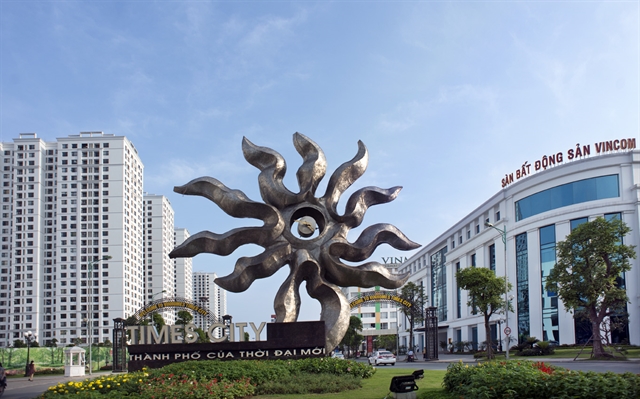 Economy
Economy

HÀ NỘI The Asian Development Bank (ADB) forecast Việt Nam’s economic growth to moderate but remain strong in the next two years despite a projected slowdown in the global economy and world trade.
In its flagship annual economic publication Asian Development Outlook 2019 launched on Wednesday, ADB forecasts Việt Nam’s economy to grow by 6.8 per cent in 2019 and 6.7 per cent in 2020.
“The economic performance in Việt Nam reached a sweet spot in 2018, driven by strong exports and domestic demand,” said ADB Country Director for Việt Nam Eric Sidgwick. “Economic growth will likely hold up well in the near term, supported by export-oriented manufacturing, foreign direct investment, and sustained domestic demand. The growth momentum is expected to continue, thanks to ongoing reforms to improve the business environment and encourage private investment.”
Growth will continue to be broad-based, underpinned by robust private consumption, the continued expansion of manufacturing, services, and agriculture, and greater market access for Việt Nam’s exports through various free trade agreements, including the recently ratified Comprehensive and Progressive Agreement for Trans-Pacific Partnership (CPTPP).
ADB forecasts that inflation will continue to average 3.5 per cent this year, before edging up to 3.8 per cent in 2020, as domestic demand is sustained, and as a result of anticipated increases in some administrative prices and minimum wages.
“Upward adjustments to administered fees for public education, healthcare and electricity may add to inflationary pressures, however, as may a higher minimum wage,” the report says.
The report says that exports might decelerate under softening global demand but imports slow less because of robust domestic consumption and investment. “Weaker global trade demand and the slowdown of advanced economies would narrow the current account surplus to 2.5 per cent of GDP this year and 2 per cent in 2020.”
If trade tensions between China and the US dragged on, Việt Nam might benefit as trade and production shift from China to its regional neighbour, ADB says in the report.
With slower GDP growth and stricter control of credit in high-risk areas such as real estate, credit growth will likely be contained in 2019 below last year’s 14 per cent. Still, the effort of resolving non-performing loans will make the banking sector more stable and efficient.
Risks, however, remain, ADB says.
The world’s major economies – Việt Nam’s key trading partners, including the US, European Union and China – are weakening faster than expected, while Việt Nam is one of the most trade-dependent countries in the region, with trade volume reaching twice the size of its gross domestic product.
Domestically, lacklustre progress in State-owned enterprise (SOEs) reform could be a drag on growth, the report highlights, pointing out that the equitisation of SOEs in 2018 fell far short of the Government’s target.
The report underlines the importance for Việt Nam to strengthen private firms’ integration in the global value chains, which is a key policy challenge for the country’s long-term growth.
Improving small- and medium-sized enterprises’ (SMEs) access to finance, and enhancing SMEs’ capability, including workers’ skills, are among important measures to enable SMEs to better adopt new technologies and have more value addition in the global value chains, according to ADB’s report.
The report points out that Việt Nam’s participation in global value chains is largely driven by foreign-owned firms. Domestic private firms in Việt Nam are predominantly small SMEs and few have effectively established linkages with the FDI sector and many suffered from limited access to finance, skill shortages, and limited capacity to purchase and adapt newer technologies and foster innovation.
Việt Nam’s economic growth accelerated from 6.8 per cent in 2017 to 7.1 per cent in 2018, the highest in 11 years, fuelled by strong exports and domestic demand.
The Government of Việt Nam set the target of reaching GDP growth of 6.6-6.8 per cent in 2019.
ADB forecasts strong growth across most of developing Asia but this year and next year will see moderation against the backdrop of slowing global demand and persistent trade tensions.
ADB predicts growth in the region to soften to 5.7 per cent in 2019 and 5.6 per cent in 2020, from 6.4 per cent last year. VNS









